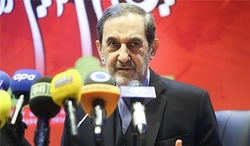 Iranian Supreme Leader's top adviser for international affairs Ali Akbar Velayati underlined his country's firm determination to continue development of its peaceful nuclear program, and further stressed ineffectiveness of the Western attempts to deprive Iran of its defense and regional power.
Iranian Supreme Leader's top adviser for international affairs Ali Akbar Velayati underlined his country's firm determination to continue development of its peaceful nuclear program, and further stressed ineffectiveness of the Western attempts to deprive Iran of its defense and regional power. RNA -"The Islamic Republic of Iran is no way going to to abandon the nuclear technology," Velayati said on Wednesday.
He referred to Iran's important and strategic achievements, including nuclear technology, regional influence and defensive weapons with proper range, and said all short- and long-term interests of Iran require maintaining and protecting these power components."
Velayati underlined Iranian supreme leader's fatwa which bans production, stockpiling and using nuclear weapons, and said there are 500 industries which are related to nuclear technology and Iran cannot be dependent on the western states to supply it with its nuclear needs at high prices.
In relevant remarks in August, Head of the Atomic Energy Organization of Iran (AEOI) Ali Akbar Salehi said that Tehran was strongly pursuing its peaceful nuclear program for civilian purposes, adding that his organization has recently opened a new unit capable of making 60 highly-advanced centrifuges per day.
On a visit to an under-construction national ion therapy center in the city of Karaj last month, Salehi said his agency had lately inaugurated a modern hall, which had the capability to produce 60 state-of-the-art centrifuges per day.
He further noted that Iran had already installed advanced IR-6 centrifuges regardless of certain states’ protest, and was currently testing a newer generation of centrifuges dubbed IR-8.
The Iranian nuclear chief hoped that the country’s ion therapy center, with an estimated construction cost of 200 million euros, would be completed and fully come on stream within the next five years.
Salehi underlined that the work on building two 1,000-megawatt nuclear power plants, which started two years ago with an estimated cost of $10 billion, would continue.
He pointed out that said Iran has never halted its peaceful nuclear program and will never do so.
“I would like to explicitly tell the people that we will continue our movement towards fulfilling our nuclear objectives and we have never stopped and will never stop in the future,” Salehi noted.
He said the AEOI used to produce 10 tons of uranium for years, while the volume stood at 30 tons last year.
Salehi emphasized that production of uranium might increase to 50 tons if the current trend continued.
847/940